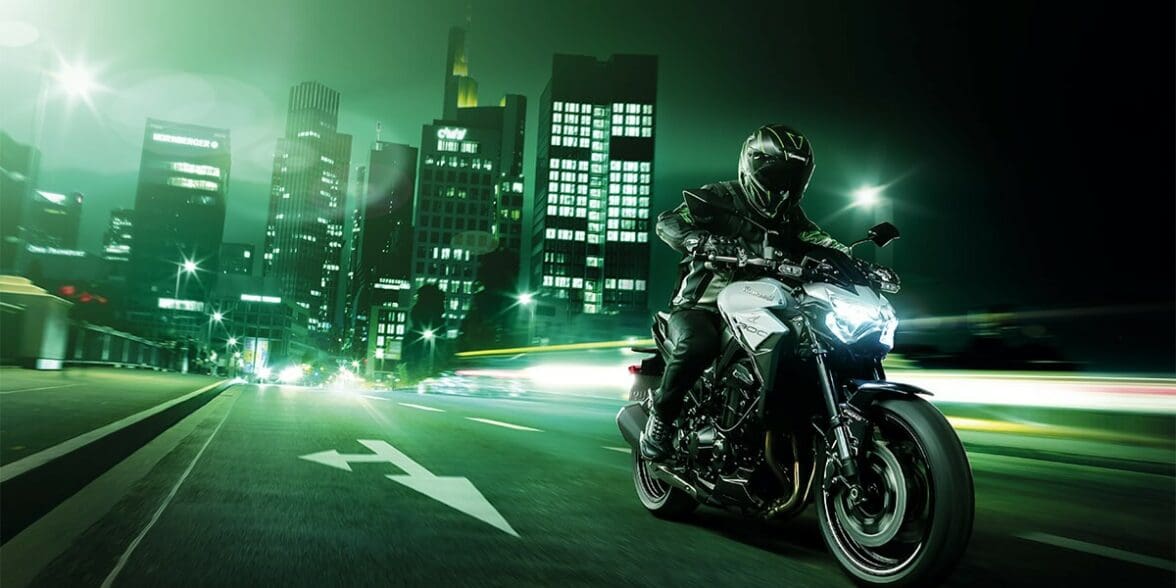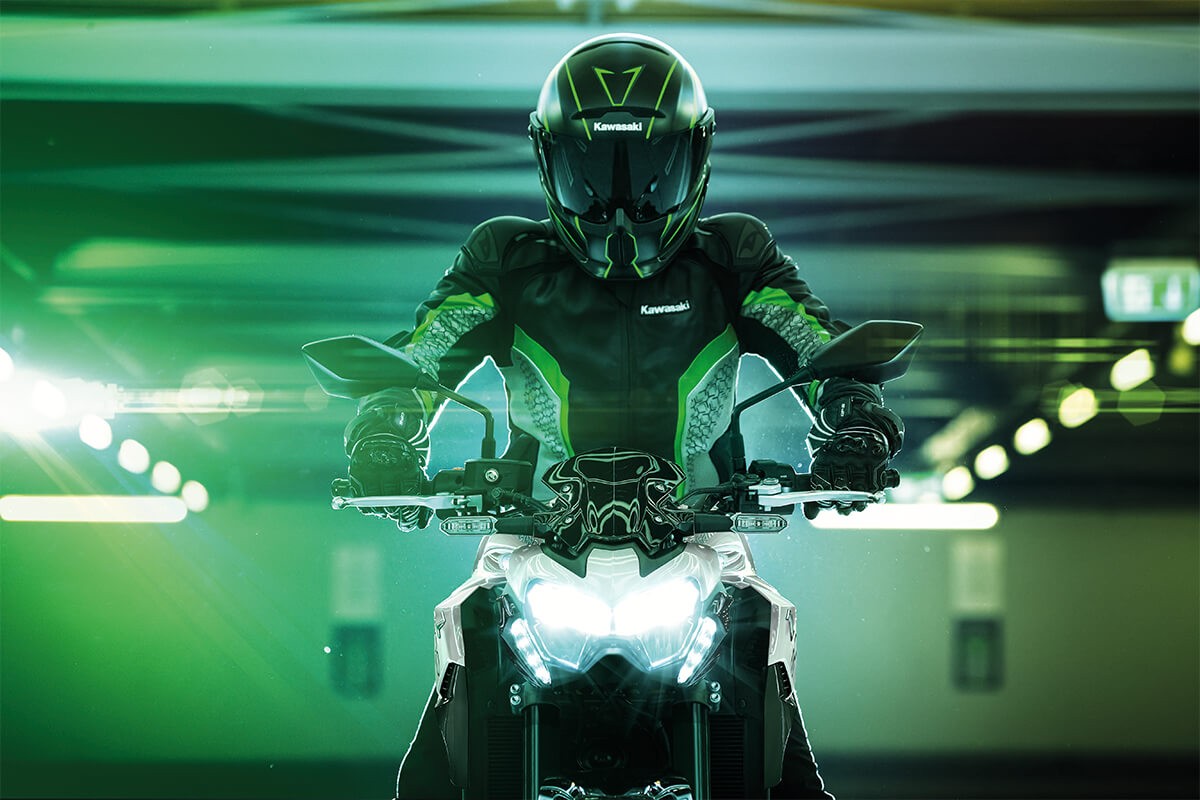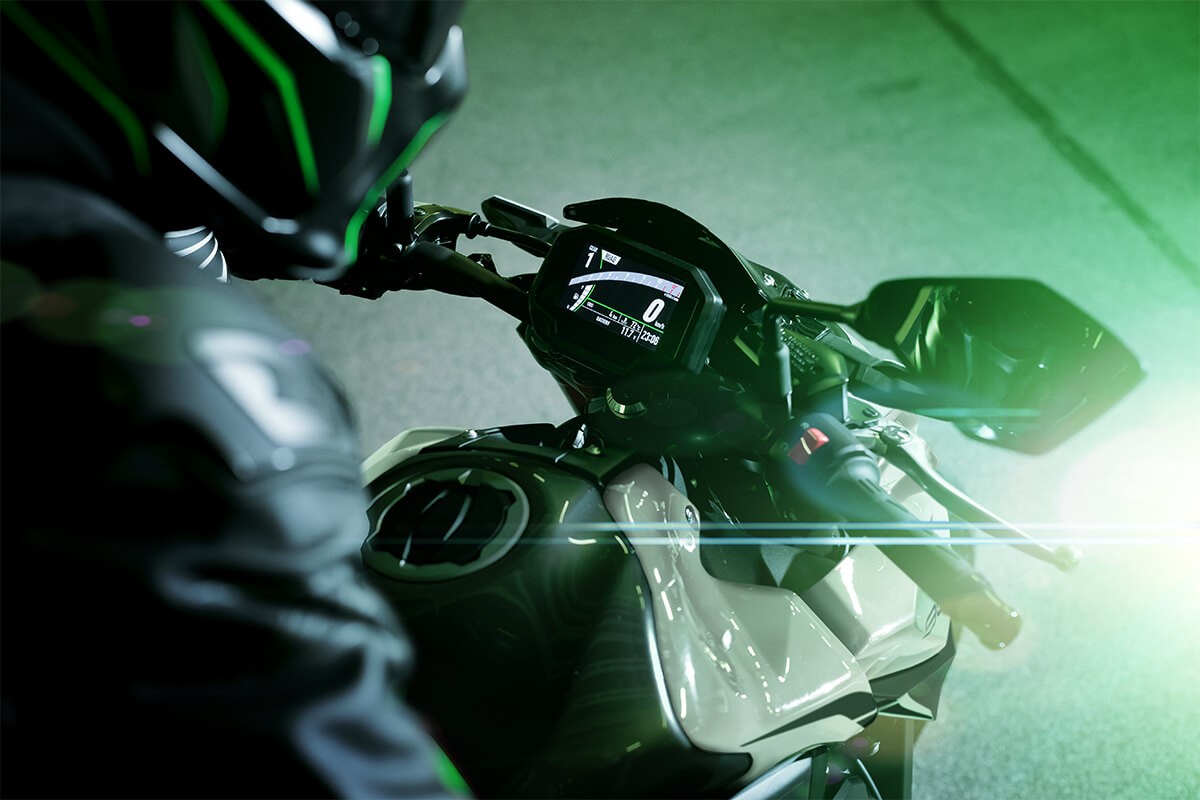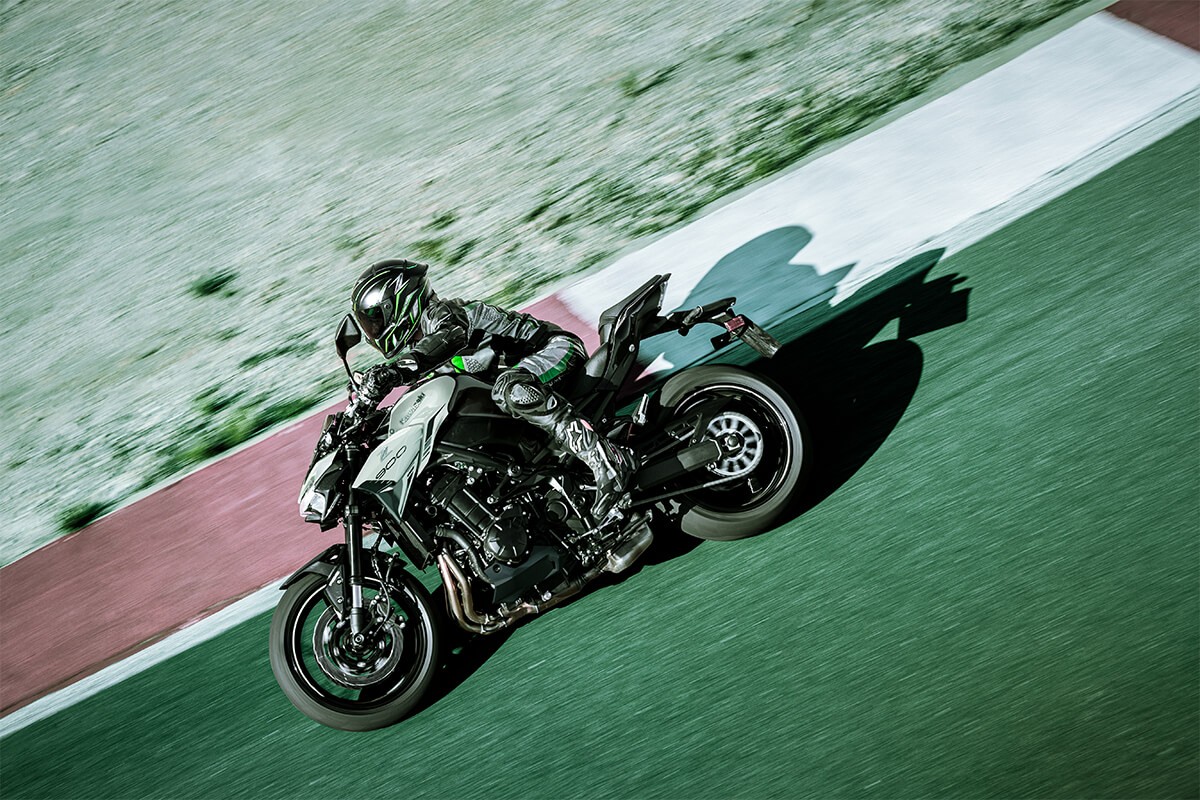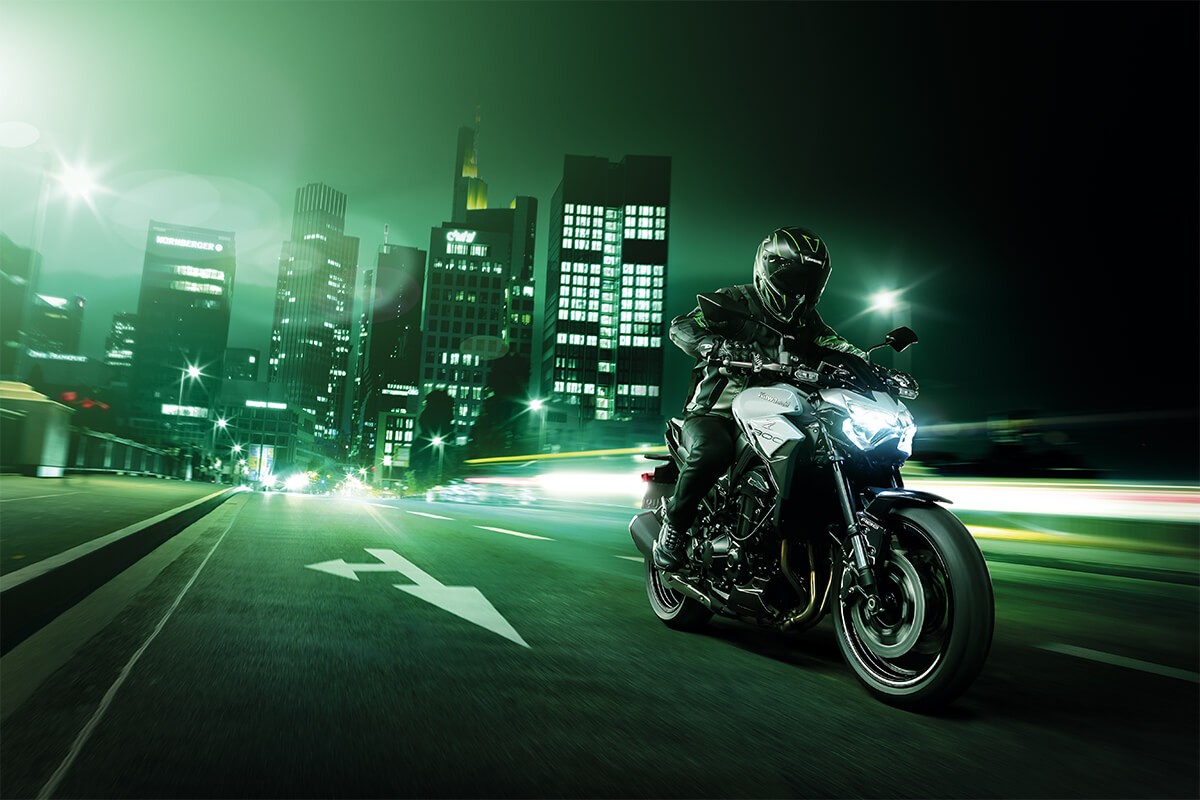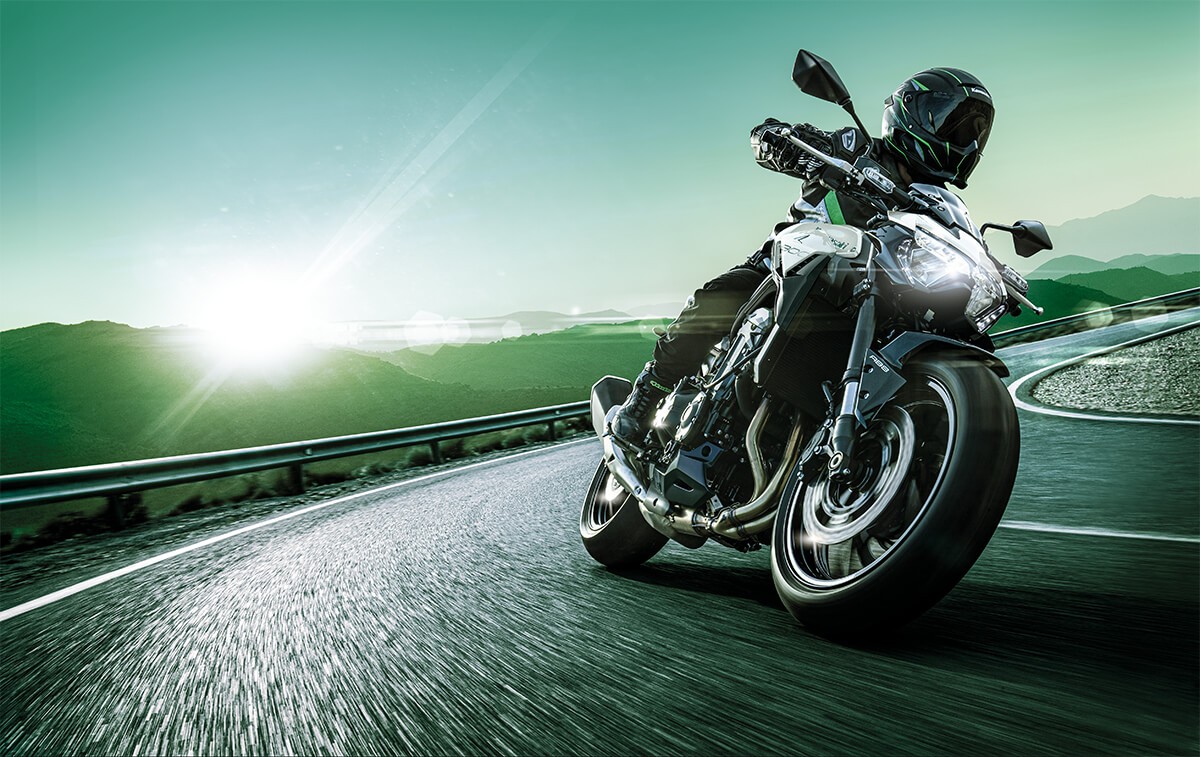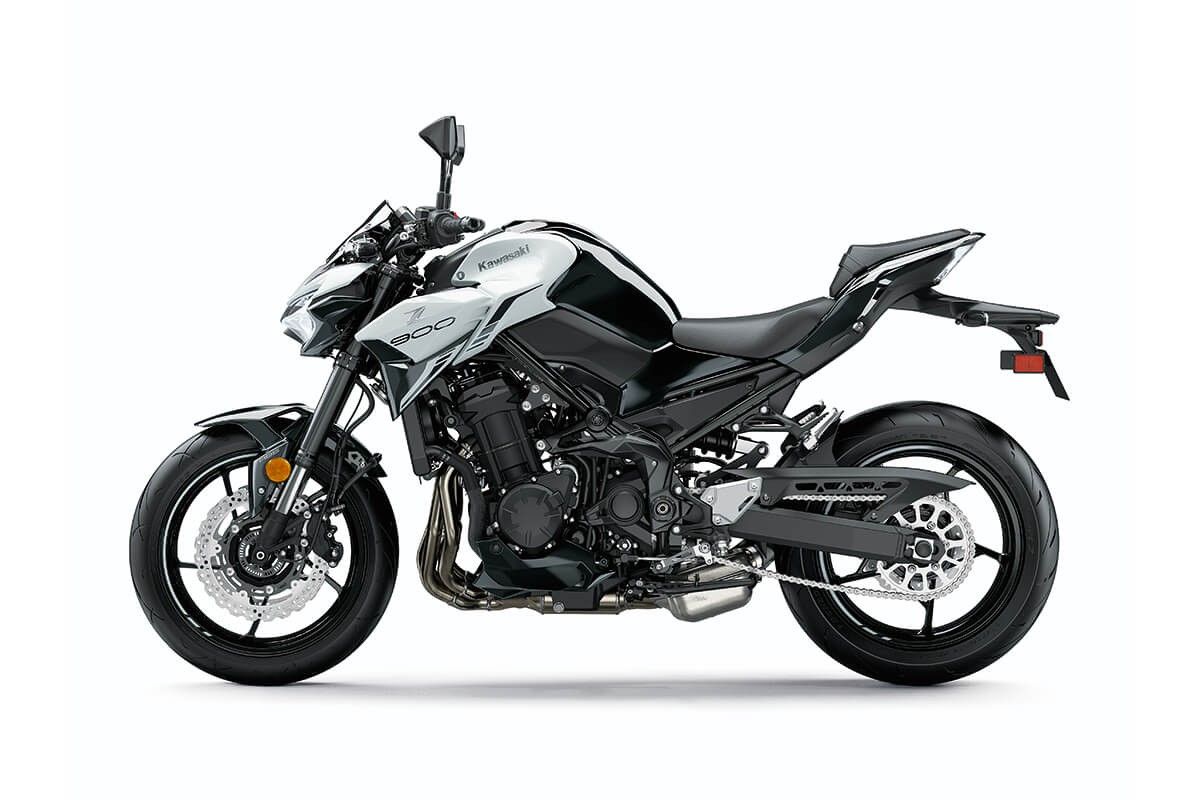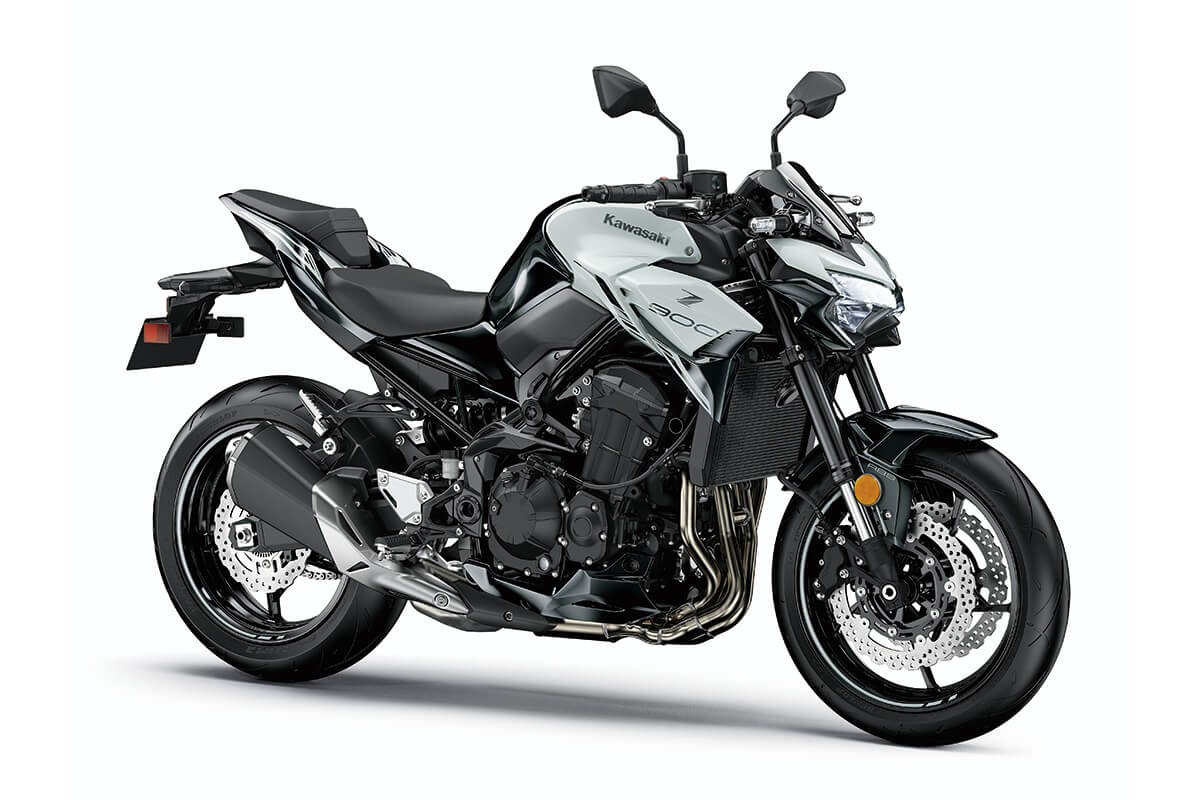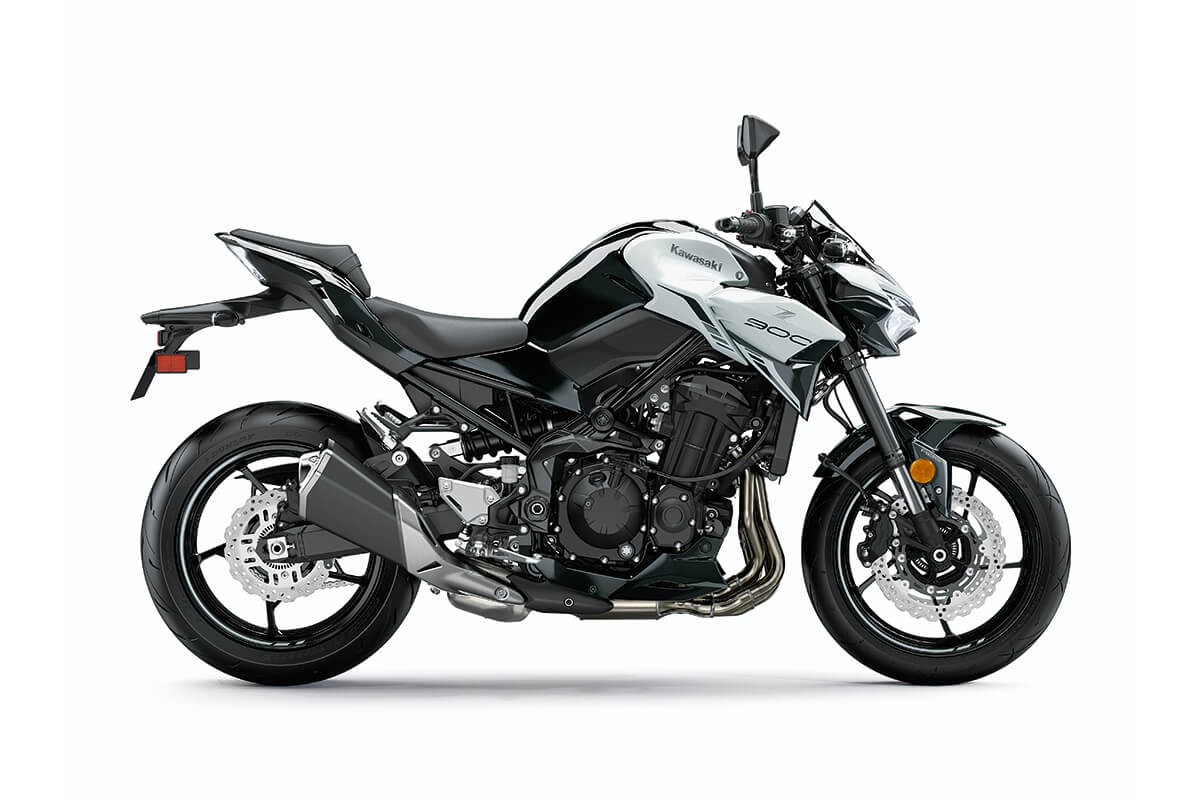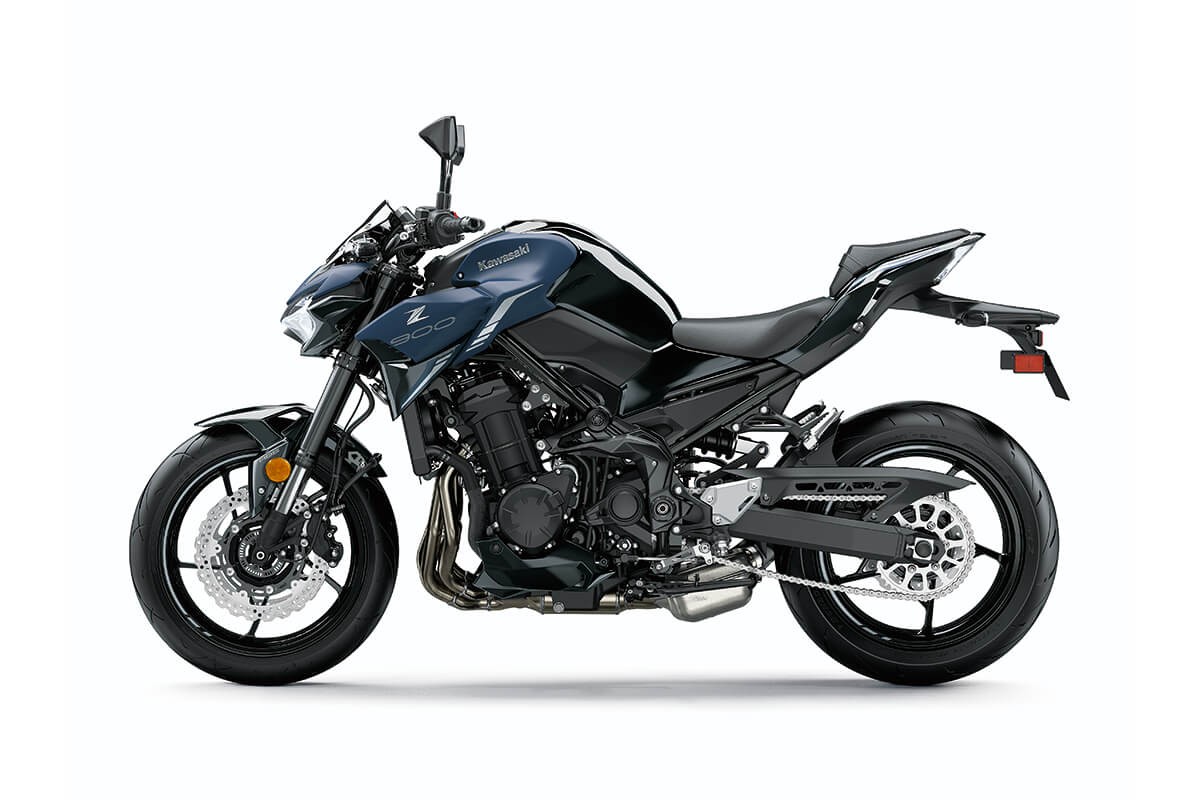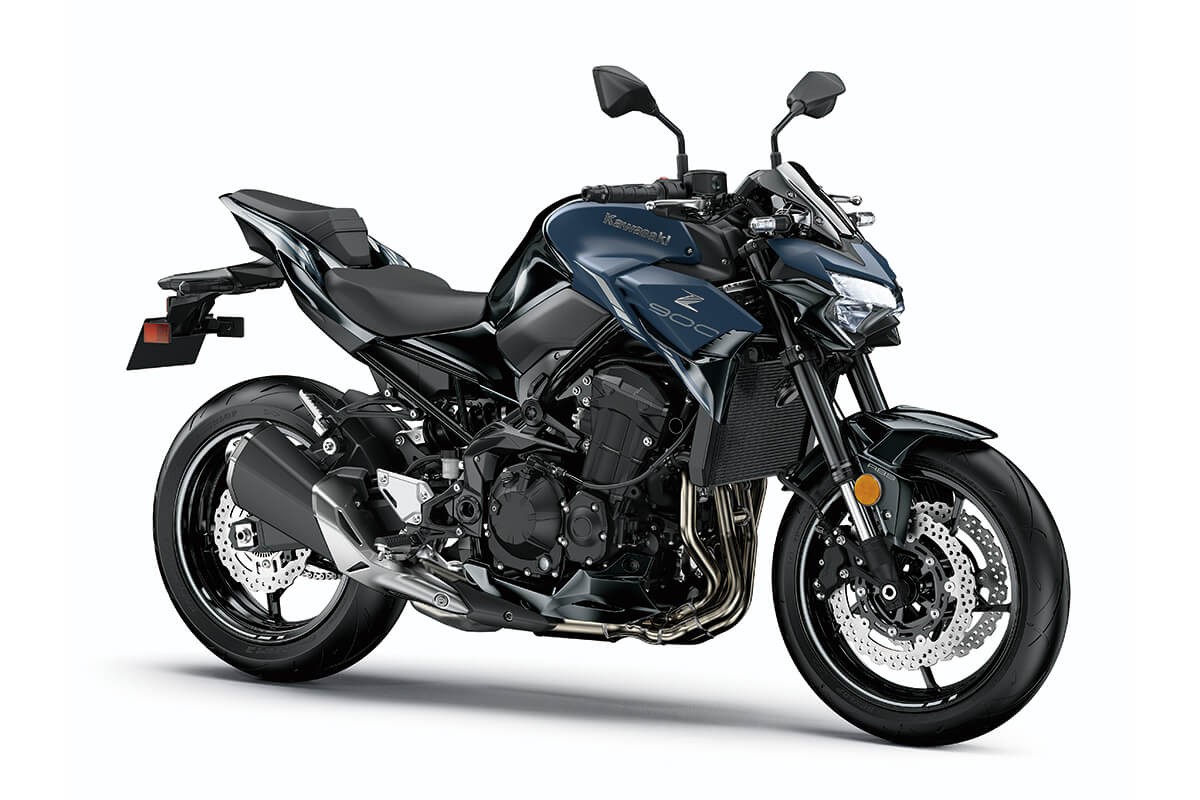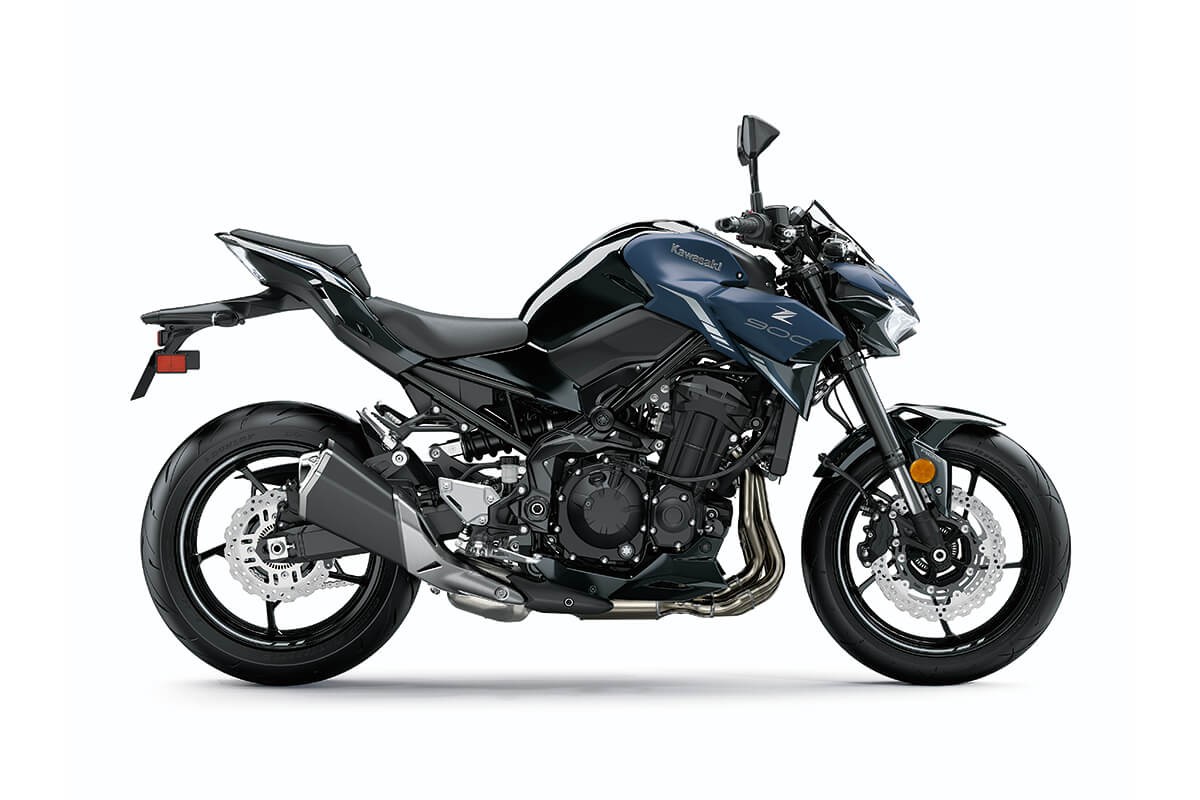The 2022 Kawasaki Z900 ABS: Time to Get Supernaked
Contents
Let’s be honest: Kawasaki makes some sexy motorcycles. And it should surprise no one that their quintessential supernaked, the Z900 ABS, fits deliciously into that category. We’re not drooling; you’re drooling.
Yes, there are plenty of naked bikes out there by Japanese motorcycle marques, like the Yamaha MT-09 or the Honda CB1000R ABS. But there’s also a good reason why Kawasaki’s website (in Canada, at least) uses a single word as the subheading for their page about this bike: DOMINATE.
With a 948cc, liquid-cooled, 4-stroke, DOHC 16-valve in-line four engine, the Z900 ABS is an absolute beast—pumping out 113 hp @ 9,800 rpm and 66 lb-ft of torque @ 8,100 rpm. For 2022, this bike receives some upgrades to improve rider experience as well—like brand new TFT color instrumentation, multiple power modes, and all-LED lighting.
The Z900 ABS is offered in two color schemes for 2022: Metallic Spark Black/Metallic Flat Spark Black and Pearl Robotic White / Metallic Matte Graphene Steel Gray. It starts at $9,199 USD / $10,999 CAD. Kawasaki’s 2022 lineup just wouldn’t be complete without it.
On this page: we’ve curated specs, features, news, photos/videos, etc. so you can read up on the new 2022 Kawasaki Z900 ABS in one place.
Model Overview
General Info
- Price: $9,199 USD / $10,999 CAD
- Key Features:
- Brand-new TFT color instrumentation
- Multiple power modes
- Sound tuning
- Kawasaki Traction Control (KTC)
Main Specs
- Engine: 948cc, liquid-cooled, 4-stroke, DOHC 16-valve in-line four
- Power: 113 hp @ 9,800 rpm
- Torque: 66 lb-ft of torque @ 8,100 rpm
- Curb Weight: 467 lbs (212 kg)
- Seat Height: 32.3 in (820mm)
Competitors
2022 Kawasaki Z900 ABS Specifications
ENGINE |
|||
| Engine | 948cc, 4-stroke, 4-cylinder, DOHC, 16-valve, liquid-cooled | ||
| Power | 113 hp | ||
| Bore x Stroke | 73.4 x 56.0mm | ||
| Compression Ratio |
11.8:1
|
||
| Fuel System | DFI® with 36mm Keihin throttle bodies | ||
| Starter | Electric | ||
| Electronic Rider Aids | Integrated Riding Modes, Kawasaki Traction Control (KTRC), Power Modes (2) | ||
DRIVETRAIN |
|||
| Clutch | |||
| Transmission | 6-speed, Manual, Return Shift, Dog Ring | ||
| Final Drive | Sealed chain | ||
CHASSIS |
|||
| Suspension Front | 41mm inverted fork with rebound damping and spring preload adjustability/4.7 in | ||
| Suspension Rear | Horizontal back-link, stepless rebound damping, adjustable spring preload/5.5 in | ||
| Brakes Front | Dual 300mm petal-style discs with four-piston calipers, ABS | ||
| Brakes Rear |
Single 250mm petal-style disc with single-piston caliper, ABS
|
||
| Tires Front | 120/70 ZR17 | ||
| Tires Rear | 180/55 ZR17 | ||
| Fuel Tank Capacity | 4.5 gal | ||
| Color |
Pearl Robotic White/Metallic Spark Black, Metallic Matte Twilight Blue/Metallic Spark Black
|
||
ELECTRICAL |
|||
| Ignition | TCBI with electronic advance | ||
| Spark Plugs | |||
| Headlight | LED | ||
| Tail Light | LED | ||
DIMENSIONS |
|||
| Overall Length | 81.5 in | ||
| Overall Width | 32.5 in | ||
| Overall Height | 42.5 in | ||
| Wheelbase | 57.3 in | ||
| Ground Clearance |
|
||
| Seat Height | 31.5 in | ||
| Curb Weight | 467.5 lb* | ||
WARRANTY |
|||
| Warranty | 12 Months | ||
| Kawasaki Protection Plus | 12, 24, or 36 months | ||
2022 Kawasaki Z900 ABS Features
Assist & Slipper Clutch
Under normal operation, the assist cam functions as a self-servo mechanism, pulling the clutch hub and operating plate together to compress the clutch plates. This allows the total clutch spring load to be reduced, resulting in a lighter clutch lever feel when operating the clutch.
When excessive engine braking occurs – as a result of quick downshifts (or an accidental downshift) – the slipper cam comes into play, forcing the clutch hub and operating plate apart. This relieves pressure on the clutch plates to reduce back-torque and helps prevent the rear tire from hopping and skidding. This race-style function is particularly useful when sport or track riding.
Dual Throttle Valves
On models with dual throttle valves, there are two throttle valves per cylinder: in addition to the main valves, which are physically linked to the throttle grip and controlled by the rider, a second set of valves, opened and closed by the ECU, precisely regulates intake airflow to ensure a natural, linear response. With the air passing through the throttle bodies becoming smoother, combustion efficiency is improved and power is increased.
Economical Riding Indicator
While effective vehicle speed and engine speed may vary by model, paying attention to conditions that cause the “ECO” mark to appear can help riders improve their fuel efficiency – a handy way to increase cruising range. Further, keeping fuel consumption low also helps minimize negative impact on the environment.
KTRC (Kawasaki Traction Control)
Less intrusive modes maintain optimum traction during cornering. Designed with sport riding in mind, they facilitate acceleration out of corners by maximizing forward drive from the rear wheel. And because Kawasaki’s sophisticated software bases its dynamic analysis on the chassis’ orientation relative to the track surface (rather than relative to a horizontal plane), it is able to take into account corner camber, gradient, etc., and adapt accordingly.
In the more intrusive modes (and for some models, in any mode), when excessive wheel spin is detected, engine output is reduced to allow grip to be regained, effectively enabling riders to negotiate both short, slippery patches (train tracks or manhole covers) and extended stretches of bad roads (wet pavement, cobblestone, gravel) with confidence.
Smartphone Connectivity
ABS (Anti-lock Brake System)
Horizontal Back-link Rear Suspension
2022 Kawasaki Z900 ABS Photos
2022 Kawasaki Z900 ABS Videos
2022 Kawasaki Z900 ABS & Z900 SE First Ride
2022 Kawasaki Z900 Abs
Links
Kawasaki Official Websites


